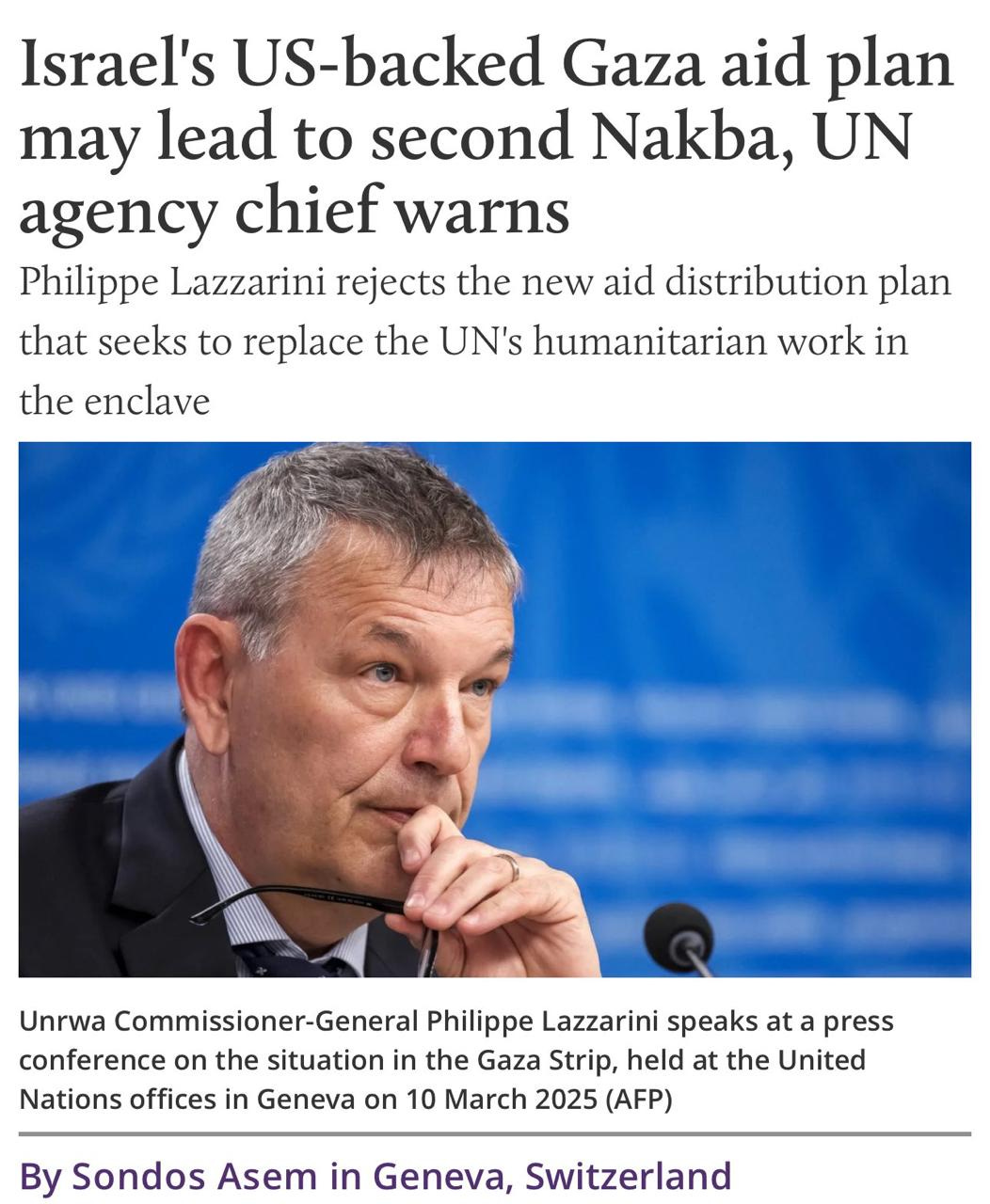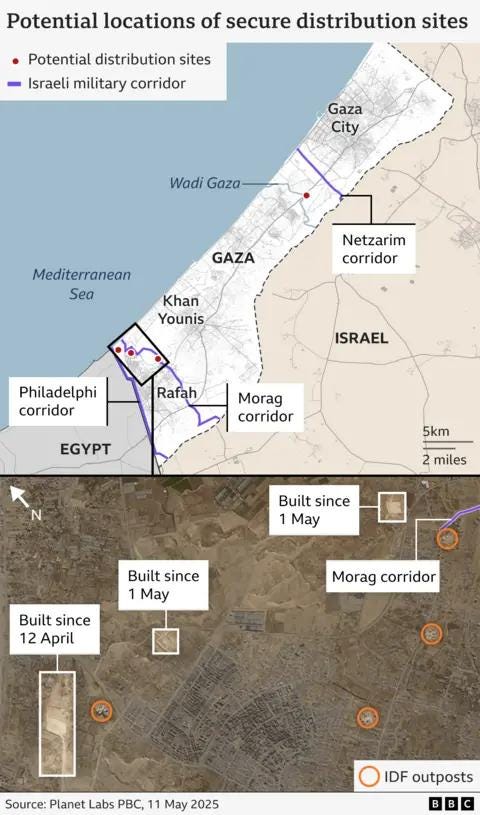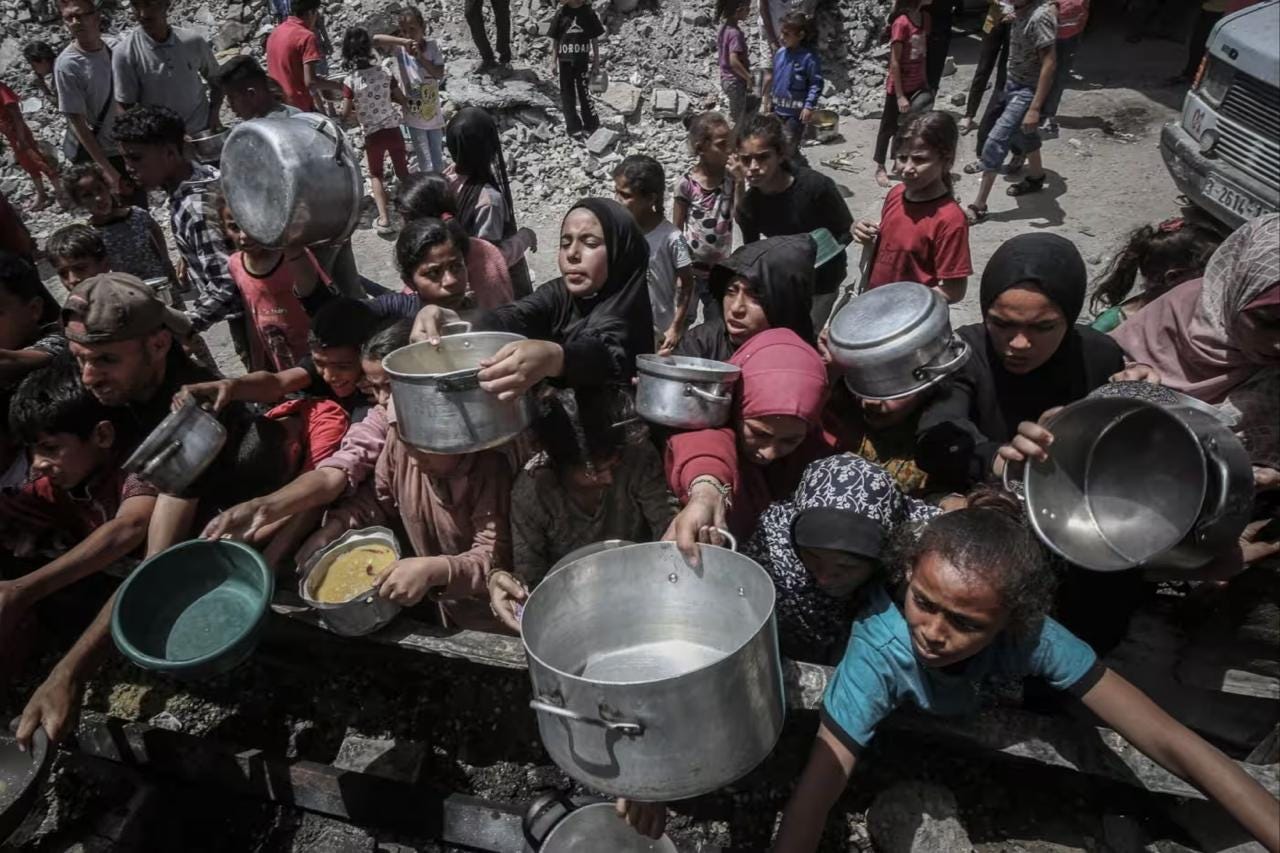The Unraveling of Gaza’s Aid Regime: Why Jake Wood’s Resignation Matters
Marketed as humanitarian reform, Gaza’s new aid model was engineered for displacement and control. Now even its architect has walked away.
This is a follow up to our previous article: Privatizing Occupation: How Israel and the U.S. Replaced Aid with Enforcement.
The resignation of Jake Wood from his position as Executive Director of the Gaza Humanitarian Foundation (GHF) marks a decisive fracture within the very architecture of the privatized aid model imposed on Gaza. Though GHF had long been criticized for its opaque operations and military-adjacent leadership, Wood’s abrupt and public departure signals more than personal disillusionment — it’s an institutional crisis.
Wood’s statement was striking in both its clarity and its gravity:
“It is no longer possible to implement this plan while adhering to the humanitarian principles of humanity, neutrality, impartiality, and independence.”
This is not the language of a bureaucratic exit. It is a damning indictment, issued from the inside, of an organization that had branded itself as an “innovative” solution for Gaza. That narrative is now unraveling.
A Controlled Collapse of the Humanitarian Mask
Wood’s departure confirms what critics, including UN officials and humanitarian NGOs, have been warning for months: that GHF was never designed to supplement humanitarian aid but to replace multilateralism with a tightly controlled system — one built around surveillance, militarized logistics, and geopolitical containment.
Wood, a former U.S. Marine and founder of Team Rubicon, was selected because he could blur the line between humanitarian and security actor. His credibility masked what was, at its core, a hybrid military-aid operation under Western management and Israeli strategic influence.
With his departure, the operation loses its last symbolic claim to moral legitimacy. The idea that GHF could exist as a neutral, apolitical relief organization — while running distribution under Israeli military protection and CIA-linked private security firms — is no longer sustainable.
Israeli Engineered, American Branded
While U.S. officials and GHF spokespeople insist the operation is “neutral” and “independent,” a New York Times investigation reveals the opposite: the entire aid framework originated inside Israel.
The plan was conceived in December 2023 at Mikveh Yisrael Forum meetings — quiet strategy sessions attended by Israeli reservists, intelligence officials, tech executives, and military planners. These meetings were designed to find ways to “pull the rug out from under Hamas,” not through food, but through control of Gaza’s civilian population.
Their solution? Privatize aid. Circumvent the UN. Use foreign contractors to establish gated distribution points in southern Gaza. And do it all with U.S.-branded nonprofits to mask the origin.
Key players included:
Philip Reilly, former CIA station chief in Kabul, now head of Safe Reach Solutions (SRS), the group providing security
Jake Wood, frontman for the Gaza Humanitarian Foundation
COGAT-linked consultants (like Yotam HaCohen), who helped design the postwar civilian containment strategy
The organizations involved (GHF and SRS) were registered around the same time, shared legal counsel, and even shared a spokesperson until just weeks before Wood’s resignation.
Despite public denials, GHF’s structure, staffing, and security partners all point to the same conclusion: this is a subcontracted occupation model, engineered in Israel, staffed by U.S. contractors, and branded as humanitarian aid.
A System Engineered for Displacement
Just days before Wood resigned, UNRWA Commissioner-General Philippe Lazzarini issued a grave warning: the Israeli-U.S. aid scheme is not just flawed, it could constitute a second Nakba.
“It becomes an instrument of a forced displacement of the population.”
— Philippe Lazzarini, Middle East Eye, May 2025
Under the plan:
Distribution points are limited to four military-secured zones in southern Gaza
Palestinians must walk miles, sometimes across Israeli lines, to access aid
Only pre-screened individuals are eligible, excluding the elderly, sick, or women with children
The UN’s 400+ distribution sites are being replaced with a system that funnels people into areas chosen by the occupying force
Rather than mitigate the crisis, the plan reshapes the population. Food becomes leverage, aid becomes a sorting mechanism.
And that’s not incidental. Israeli military documents and journal articles confirm that the plan was intended to break Hamas’s social base and “manage” Gaza’s civilians from the outside by controlling what they eat, where they move, and whether they are recognized as aid recipients at all.

Implications Beyond the Organization
Wood’s resignation casts a long shadow over the entire network of contractors and donors involved with GHF. His departure demands a re-examination of:
Who controls the data gathered through this aid model?
Who is financing the estimated $100+ million operation? (GHF refuses to name its backers)
How deeply embedded are private military firms and intelligence-linked actors?
Swiss regulators are reportedly considering legal action under international humanitarian law, and UN bodies are already pushing back against what they view as a direct assault on humanitarian neutrality.
Resignation as a Red Flag
Jake Wood’s resignation came just days after major reporting confirmed that the Gaza Humanitarian Foundation’s aid model was not independent, but originated in Israeli strategic forums designed to reshape Gaza’s population distribution. Investigations by Middle East Eye and The New York Times revealed that the project’s key features — centralized distribution in southern zones, exclusion of the UN, and coordination with private security firms — were developed by individuals closely tied to Israel’s military and intelligence agencies.
In an interview, Wood attempted to distance himself from those implications. He stated that GHF had been endowed with “the necessary autonomy to operate independently,” and insisted:
“I would participate in no plan in any capacity if it was an extension of an I.D.F. plan or an Israeli government plan to forcibly dislocate people anywhere within Gaza.”
Yet within 48 hours, he resigned — citing the organization’s inability to uphold even the most basic humanitarian principles.
The proximity of those two events raises serious questions. If Wood truly believed the project was independent, what changed? The likely answer is that it wasn’t — and that internally, the gap between the public narrative and operational reality became too wide to ignore.
The reporting shows that:
GHF shares legal and administrative ties with Safe Reach Solutions, a firm led by a former CIA officer and chosen by Israeli officials
The aid model was crafted in meetings that explicitly rejected UN coordination and envisioned contractor-led civilian management
Food aid would be distributed in militarized “sterile zones,” forcing displacement from the north
In that context, Wood’s public denial, and rapid exit, looks less like confidence and more like damage control from inside a failing system.
His resignation is more than a personnel change. It is a warning: that the project’s own leadership no longer believes it can be defended on humanitarian grounds.
This Is Not Aid — It’s Administration by Occupation
The Gaza Humanitarian Foundation was sold to the public as a clever workaround — an apolitical logistics solution for a broken aid landscape. What it became was something else entirely:
A tool for territorial sorting.
A mask for military encirclement.
A test case for privatized humanitarian control.
What’s unfolding in Gaza today is not a glitch in the aid system — it is the aid system, redesigned as an extension of occupation. When even its architect walks away, the rest of the world should take notice.
This is not humanitarian relief.
This is the codification of containment, one checkpoint, one ration packet, one biometric scan at a time. This is terrifying.







